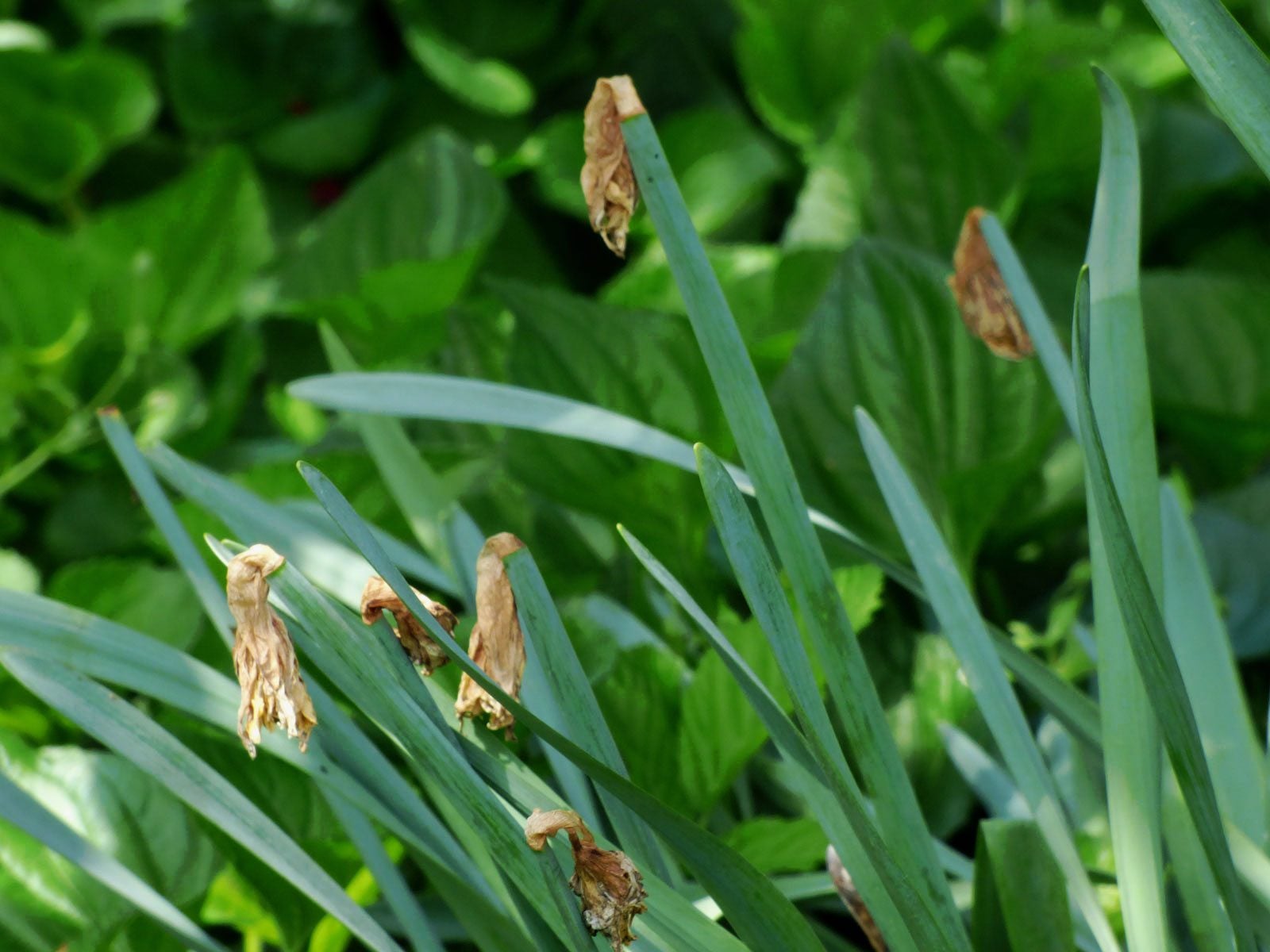After Bloom Care Of Daffodil Flowers: Caring For Daffodil Bulbs After Blooming


Daffodils are familiar bloomers that light up the garden with bright color in early spring. They are surprisingly easy to grow and will last for many years with very minimal care. Although daffodils are amazingly easy to get along with, caring for daffodil bulbs after flowering is essential. Read on for tips on what you need to know about the care of daffodil flowers after blooming.
Daffodil Care Post Bloom
Remove daffodil blooms as soon as they fade, otherwise, the bulbs will exert considerable energy attempting to create seeds. However, remove only the bloom and stem, not the leaves. This is the critical aspect of daffodil care after they bloom. Why do we leave the unsightly foliage in place? In simple terms, the leaves absorb energy from sunlight, and through the process of photosynthesis, the energy is converted into chemicals that produce sugar -- the food that keeps bulbs blooming year after year. If you remove the foliage too early, the bulbs will be stunted, which results in smaller and fewer blooms in the following year. This also explains why daffodils should be planted in bright sunlight. If your daffodils are planted in partial or full shade and they don't produce big, healthy blooms, you might want to dig them and move them to a sunnier location after the foliage dies down. Leave the foliage in place until it dies down and turns yellow. Usually, this takes about six weeks. If the appearance of the dying foliage is driving you crazy, don't braid the leaves or bunch them in rubber bands, which reduces the amount of sunlight available to the leaves. Instead, consider ways to camouflage the leaves. For example, plant perennial plants that will hide the dying foliage as they grow in spring.
Daffodil Plant Care
Water daffodils generously while the plant is blooming, but keep the soil relatively dry when the plants are dormant during the summer. Provide a handful of bulb fertilizer or any general-purpose fertilizer when shoots poke through the ground in early spring. Be sure to fertilize the soil around the daffodil plant, but keep the fertilizer off the foliage. Divide daffodils every three to five years, or whenever you notice that flowers are smaller in size or number. Divide the plant when the foliage is dying but still visible so you can see where to dig.
Sign up for the Gardening Know How newsletter today and receive a free copy of our e-book "How to Grow Delicious Tomatoes".

A Credentialed Garden Writer, Mary H. Dyer was with Gardening Know How in the very beginning, publishing articles as early as 2007.